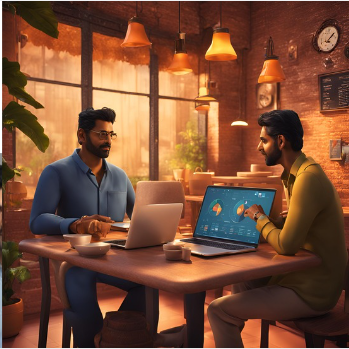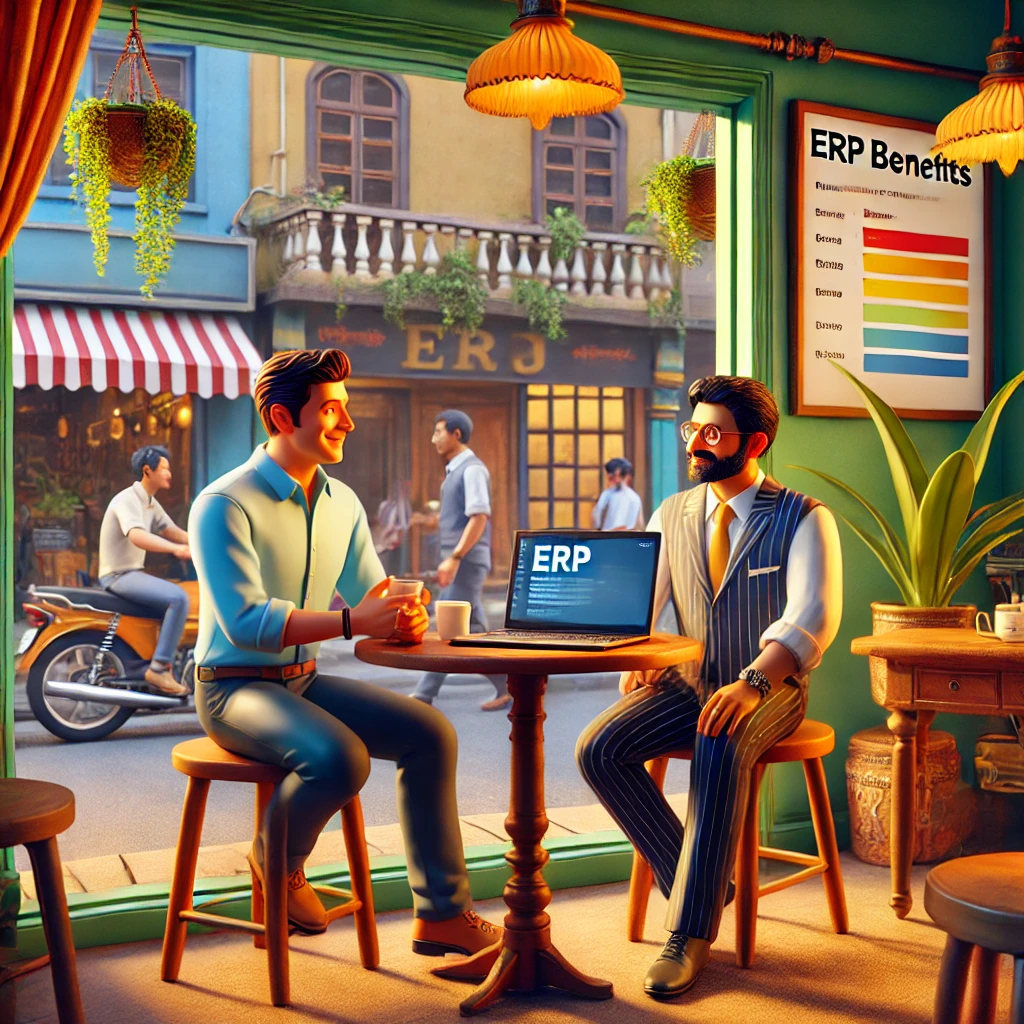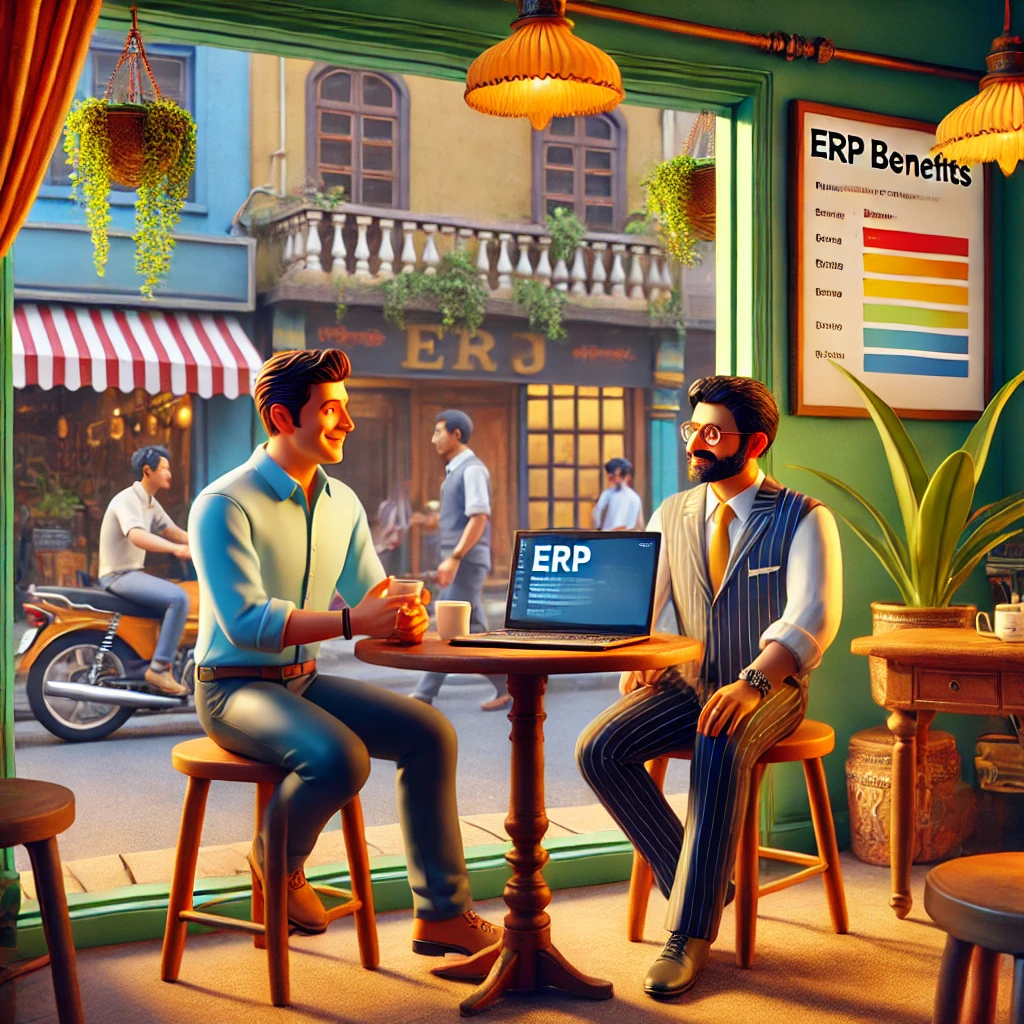ERP Implementation in Manufacturing SMEs: A Talk Between Prakash and Manoj
Scene: A casual coffee meeting at a Cafe
Character-1: Prakash-CEO of Alpha Manufacturing (An SME that has already implemented ERP)
Character-2: Manoj-CEO of Beta Components (An SME considering ERP implementation)
Prakash: [sipping his coffee] So, Manoj, you mentioned you're thinking about implementing an ERP system in your company. How's that decision-making process going?
Manoj: [leans back] Yeah, Ravi. It's been on my mind for a while. But, you know, it's not an easy call. We’re managing everything with our current systems, so I’m trying to figure out if ERP is really worth it for an SME like ours.
Prakash: [nods understandingly] I totally get it. We were in the same boat a couple of years ago. I had my doubts too. But trust me, once we went live with ERP, it was a game-changer for us at Alpha Manufacturing.
Manoj: Really? But aren't ERPs more suitable for large companies? I keep hearing they’re expensive and complicated. Plus, our operations are not that big.
Prakash: That’s a common misconception, yaar! It's true that ERP systems were traditionally for big companies, but now there are solutions tailor-made for SMEs like ours. You don’t need a massive budget to get started. We started small and scaled gradually. The beauty of ERP is how it streamlines even smaller operations.
Manoj: Hmm, but how did it help specifically in your case? We’ve been using Excel sheets and some custom software for inventory and accounts. What difference would ERP make?
Prakash: [smiles] Ah, let me tell you. We used to manage everything the same way—spreadsheets for inventory, Tally for accounts, and manual tracking for orders. It worked... but it wasn’t efficient. Our data was scattered everywhere. With ERP, everything is integrated. Inventory, procurement, production, sales, HR—everything is connected. You get real-time visibility.
Manoj: Real-time visibility? How does that help practically?

Prakash: Think about it this way. Before ERP, whenever we got a big order, I had to manually check inventory with our store manager, coordinate with production for timelines, and then update finance for invoicing. Now? All I need to do is check the system. I can see live inventory levels, the status of production orders, and how it’s impacting cash flow—all in one place.
Manoj: [nodding thoughtfully] That does sound more efficient. But wasn’t the implementation process a headache? I’ve heard stories about it dragging on for months, and we can’t afford too much downtime.

Prakash: [laughs] I won’t lie, it does take some time and planning, but it’s not as bad as you think. We partnered with a good ERP vendor, and they tailored the system to our needs. The key is to start with core functions—like inventory and finance—and then gradually expand to other areas like production planning or CRM. It took us about four months to fully integrate the system, but the disruptions were minimal. Plus, the vendor gave our team proper training.
Manoj: Hmm, and what about costs? I’m sure that’s where things start to get heavy.
Prakash: Honestly, it’s more affordable than you’d expect. There are plenty of cloud-based ERP options now. We went with a SaaS model, so instead of a huge upfront investment, we pay a monthly subscription. And once you factor in the savings—reduced wastage, better inventory control, fewer human errors—it pays for itself in the long run. Plus, our decision-making has improved because we have accurate data.
Manoj: SaaS, huh? That does sound more feasible. And you mentioned better decision-making?
Prakash: Definitely. For example, last year we were able to negotiate better rates with suppliers because we had precise data on what we needed and when. Also, the reporting features give us insights into what’s selling well, which products have slow turnover, and how to optimize production scheduling. You can make decisions backed by data, not just gut feeling.

Manoj: That sounds really helpful. We often end up overstocking or understocking, which is a headache. If ERP can help us manage that, it could make a real difference.
Prakash: Exactly! Imagine not having to worry about that anymore. And it’s not just inventory—think about customer management. With an ERP, you can track customer orders, preferences, and even automate follow-ups. Your customers will appreciate the improved service, and you’ll never miss an opportunity.

Manoj: I can see the value now. So, you’d recommend starting small, right? And gradually adding modules?
Prakash: That’s the best way. Don’t go for everything at once—it’ll overwhelm your team. Start with the basics like inventory and finance. Once your team is comfortable, you can add more functionalities like production planning or sales management.
Manoj: That’s solid advice. Thanks, Ravi. I think it’s time we seriously look into it. Any tips on choosing the right vendor?
Prakash: Choose someone who understands your business and has experience with SMEs. Look for a vendor who provides good post-implementation support because you’ll need it in the initial months. And remember, it’s not just about the software; it’s about how well it integrates with your processes.
Manoj: You’ve really made a convincing case! I’ll start exploring our options. Maybe in a few months, I’ll be telling you about how smooth things are running at Beta Components too!
Prakash: [laughs] I’m sure you will! And when you do, we’ll meet up again for coffee and celebrate your ERP success!



